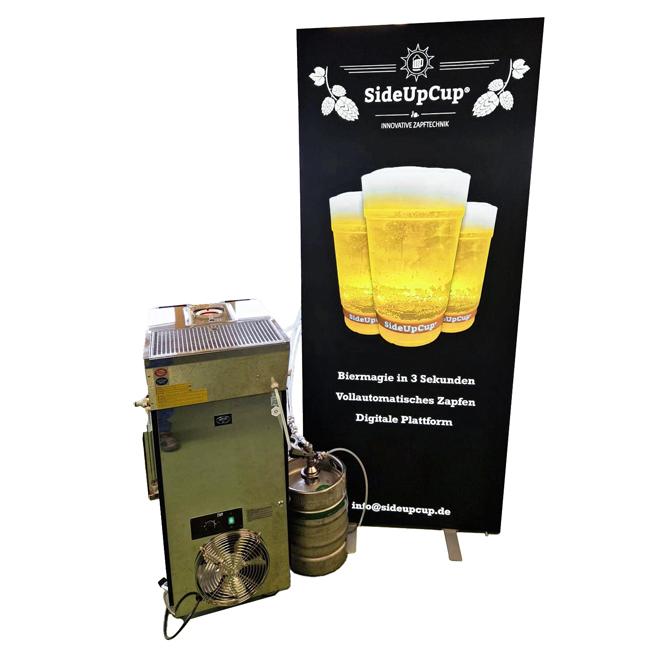SMC2 calls to action for climate protection
On 20th March 2023, the Intergovernmental Panel on Climate Change (IPCC) published its 6th report. The result is more than worrying. Greenhouse gas emissions continue to increase as well as exacerbating climate risks. There is an urgent need for action! Construction companies in the sports sector have also understood that clubs and municipalities are becoming more and more aware of this emergency. Unfortunately, some companies tend towards so-called greenwashing and use arguments that can sometimes be misleading when communicating about the sustainability of their products.
Greenhouse gas balance of sports facilities:
The construction industry must act!
The environmental assessment of products is regulated by international standards. Two sets of rules apply to the life cycle analysis or life cycle assessment of a product: ISO 14040 on the principles and framework conditions of life cycle assessments and ISO 14044 on requirements and guidelines for conducting life cycle assessments.
In addition, EN 15804 stipulates that the life cycle assessment of two building materials must be compared on the basis of the respective EPDs (Environmental Product Declaration). The EPD of a product takes into account the environmental impact over the entire life cycle, from the production stage (phases A1 to A3), transport and construction/installation in the erection stage (phases A4 to A5) through the use stage (phases B1 to B7) to the disposal stage with dismantling and waste treatment (phases C1 to C4).
The construction industry has a significant share in climate change: It causes 38 % of global greenhouse gas emissions and the CO₂ pollution it causes in our environment has many sources. It is therefore crucial to change habits and design and construct buildings – including sports facilities – in a way that limits climate change and CO₂ emissions.

Photos: SMC2
What can we do?

Photos: SMC2
As a leading European company for the design and construction of sports and leisure facilities, SMC2 has been committed to sustainable construction since its foundation in 2003. With structures made of wood and textile building envelopes, our sports facilities always have a clean ecological balance. In order to compare the sustainability of our concept with conventional steel halls, we compared the CO₂ balance of two comparable projects. Both projects involve the construction of an open-air hall over a pitch with net dimensions of
15 m x 30 m:
1. the open-air hall built by SMC2 in Siegen (Germany) with a wooden structure and membrane roof
2. a comparable open-air hall with a steel structure and metal roof
The calculation basis was the data from the EPDs of the used building materials. The Global Warming Potential (GWP) of the building materials is considered here, which differs primarily in the production phase (phases A1-A3), since it can be assumed that the construction phase is of similar importance for both projects.
As far as the GWP is concerned, the facts are clear: with greenhouse gas emissions of 45 tons of CO₂ equivalent, the steel hall has a significant environmental impact in the manufacturing phase of the building materials. In contrast, the solution from SMC2 not only produces significantly fewer emissions in this phase, but also saves 15 tons of CO₂ equivalent calculated over the life of the building.
The two compared solutions meet the same usage requirements: They offer athletes protection from the weather and strong sunlight and enable sports activities all year round. Isn‘t it better to prefer the more environmentally friendly solution?

The sustainable construction method by SMC2
We at SMC2 know the data of the EPDs since the beginning of our activity. For this reason, we have always favoured a combination of wood from sustainable forestry and textile membrane for most of our sports facilities, especially outdoor halls.
Through the photosynthesis of CO₂, wood stores carbon during its growth phase. This carbon sequestration, which lasts at least for the lifetime of the structure, makes wood the only building material with a negative carbon footprint, making it a valuable ally in the fight against global warming. According to the IPCC, it is imperative that global net CO₂ emissions will be reduced to zero by 2050 if we are willing to limit global warming below 2° Celsius by 2100. However, we should do everything we can to limit global warming to 1.5 ° Celsius by then.
The textile membrane not only has a very low carbon footprint compared to other building materials commonly used for roofing of sports halls, but it also eliminates the need for artificial lighting during the day due to its translucency. This reduces energy consumption over the entire lifespan of the building.
Thus, by choosing this type of construction, municipalities and clubs are opting for an environmentally friendly building that also offers athletes a maximum of comfort, because the textile membrane prevents the building from overheating and offers good acoustics and optimal lighting conditions. In addition, SMC2 offers the possibility of equipping the building with photovoltaic modules. This makes the hall a plus-energy building that produces more electricity than it consumes!
We must act today in order to maintain the habitability of our planet for mankind in the future and to protect biological diversity. Those involved in sport have a special responsibility not to leave our children a devastated planet. Let‘s act now!





